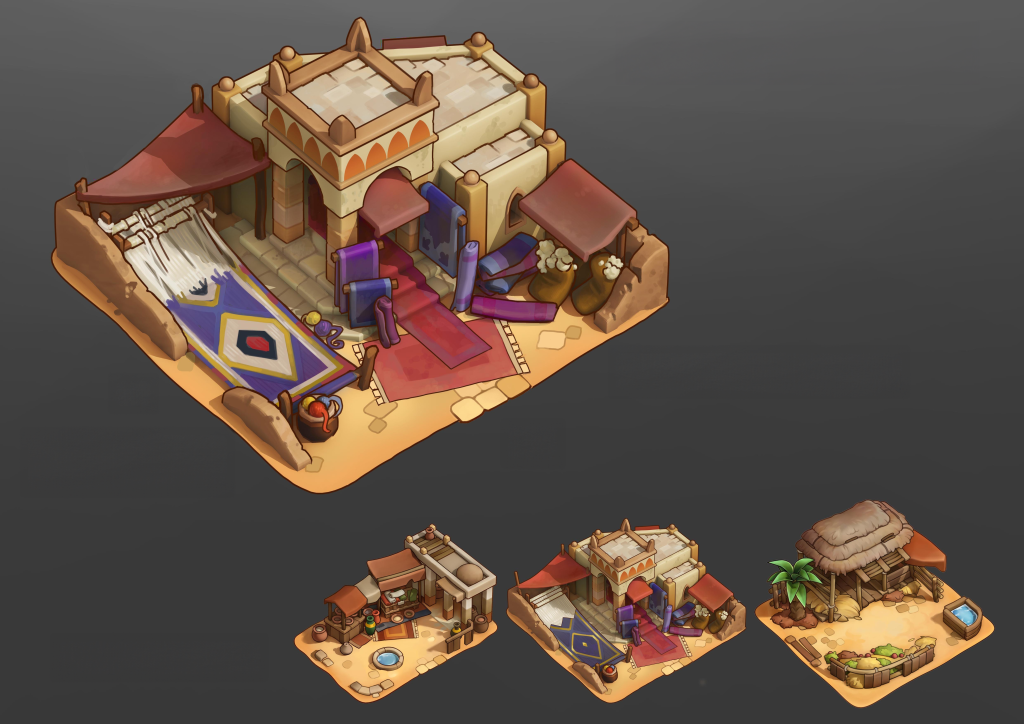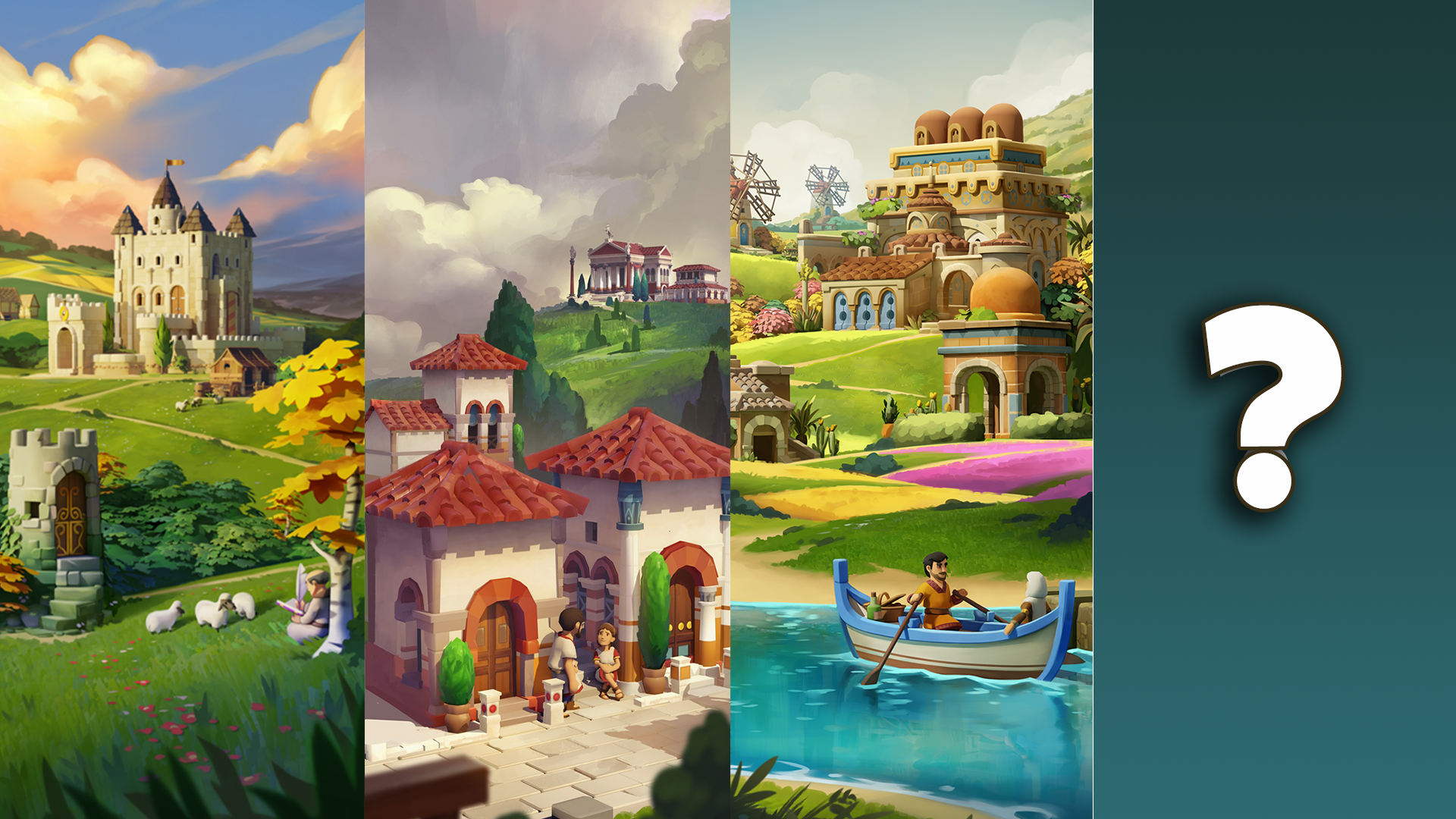It’s natural and very much inevitable that at least some players eventually reach a game’s famous end of content. Defined as the point at which a player has completed all currently available levels, tasks, narratives, or challenges in the game, a game doesn’t have content left for the player to explore or complete at that moment. While events help a lot to keep players at the end of content busy for a limited time, they can’t offer the same experience a big content expansion brings: it typically offers more longevity and depth to the game by introducing new storylines, mechanics, characters, levels, or challenges, and as result keeps the game engaging and fresh.
In Rise of Cultures, the equivalent of a big content expansion is an “era”. Each era represents a certain historical period within the game and comes with a distinct set of the available buildings, technologies, and cultural traits reflecting that specific time. Players progress through different Eras by gaining advancements, which enhances gameplay and adds depth to the strategic elements of the game. For example, for the Kingdom of Sicily Era the team researched several important goods and ingredients used in this region and chose the Sicilian chili, also known as Peperoncino, as one of the goods to be produced in its own workshop. The same happened with coffee in the Arabian Allied Culture, due to its cultural and economic importance. Architecture, materials, colors and other elements add up to make each individual building more authentic and recognizable (see images below).


Just recently, the Rise of Cultures team declared that the launch of the next era is planned for the first half of 2024 (check out the announcement)! Now that the Rise of Cultures Community has started cooking their theories of what characters and plot can be expected from the new era that is set around 1100 C.E., we are taking the opportunity to look backstage and understand what it takes to create a new era!
Before the Rise of Cultures team can start working on a new era, they obviously need to know what to work on. Therefore, a theme and story as well as concept art gets drafted, right after lots of research. A new era needs to fit into the bigger picture of the games’ existing story, while depicting a truthful image of the real-world equivalent of the era. At the same time, since the new era is a continuation of past eras, setting the next era translates into deciding how the Rise of Cultures story timeline can progress in the future. Rise of Cultures doesn’t jump back in time, so making the decision on a new era partially a decision for the future, too!
For the second part of the Arabian Allied Culture of Rise of Cultures, the first concept for the new buildings is in the works.

While the concept is coming from game designers and artists, developers and product management take part in this early stage by evaluating the feasibility of the project plan, as it’s important to check if an era is theoretically feasible in terms of all different disciplines. The more detailed and extraordinary the required work becomes, the more time-consuming and difficult the production of an era is. The roadmap, covering the schedule for events, new features, and changes for an entire year, also needs to be considered. To not compromise development later, the team is also checking what assets can be reused and altered to save production time and which assets need to be created to be exclusively used in the new era.
Gradually, when the game design for the new era gets more detailed, both 2D and 3D artists create the art assets you can find later in the game. Culturally specific music and sounds are created so the new era stands out from the previous ones. At the same time, developers work on programming for the new era. This includes enabling all other components such as Game Design and art to put together all their work, but also developing new mechanics and extensions to the existing content, and lastly testing this in a manual and automated way.
The implementation of the progression from the last era to a new one isn’t necessarily something new. However, with all these changes a new era requires, one single click made by a player can have an enormous impact on the whole game state, visibly and invisibly! This little glimpse might give you an insight into what needs to be tested, adjusted, and fixed, even before a test version exists!
As soon as a test version of the new era is finally ready, a considerable amount will be spent to put the test version through paces by the whole Rise of Cultures team! Including all team members in the test means to look at the new era from every perspective. This way it’s much easier to bring necessary tweaks and improvements to the teams’ attention. For example, testers might deem unlocking a certain new technology to be either too easy or take too much time – this would make it necessary to rebalance the progression of the era in one way or another, for instance by reducing the required resources or adjusting the whole game economy for this age.
Eventually, one version including the new era gets the greenlight from the product manager and the era can be released with a new game update. However, even though the whole team can’t wait to show the new era to players, caution is required! To give an example, the new version of the game must include all changes made with the latest live version, and at the same time, changes to the database due to the possibility of unlocking a new era must be prepared for the release day!
Then, finally, the release day arrives and thanks to all the combined work of all different disciplines, the new era is live and ready to play! This doesn’t mean the work is complete here – while some team members might already start working on new features and improvements for the players to enjoy at this point, it isn’t unusual that some work follows up especially for developers, since unexpected bugs or issues might appear once the feature is live for a massive number of players, on different devices, using different settings and operating systems. At the same time, the Rise of Cultures team collects feedback from the community to learn about what players like about the new era, what parts might need improvement, and what players wish for the next era to come.
And that’s it! This is a walk through the process of developing a new era for Rise of Cultures! While the team is working on it behind-the-scenes, play the existing eras in Rise of Cultures! And for a nice comparison on how different InnoGames’ city building games progress, we can recommend you, check out the “Ages” in Forge of Empires and the “Chapters” in Elvenar!
– Vivien Redmann –
Trainee Community Management

